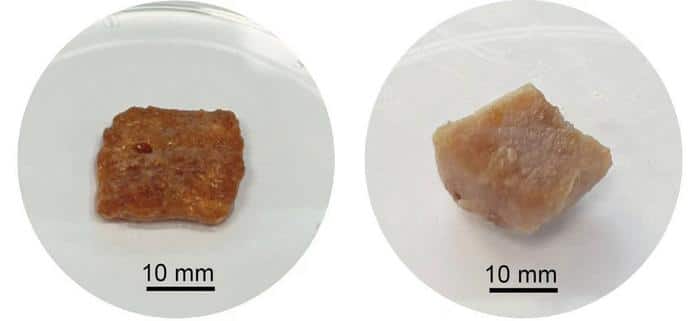
Researchers explore the potential of sorghum-based scaffolds to enhance lab-grown meat production.
Lab-grown meat, often referred to as cultured or “clean” meat, is no longer a futuristic concept according to a news release from the American Chemical Society. Since its initial debut over a decade ago, lab-grown chicken has even reached U.S. restaurants as of 2023. Now, new innovations are expanding these options, leveraging plant-based scaffolds to support meat cell growth. A study published in the ACS’ Journal of Agricultural and Food Chemistry highlights a groundbreaking approach: creating cultured pork using kafirin proteins extracted from red sorghum grain.
Cultured meats and plant-based alternatives have gained traction as more ethical and environmentally conscious substitutes to traditional meat consumption. Their production typically demands less land, water, and results in lower greenhouse gas emissions. Unlike plant-based meats, cultured varieties use actual animal cells, cultivated in a lab on protein scaffolds, instead of being harvested from animals. Traditional scaffolds often use materials like wheat gluten, pea protein, and soy protein, but these water-soluble choices may require extra processing steps or pose risks to individuals with gluten intolerance. To tackle these limitations, Linzhi Jing, Dejian Huang, and their team developed a novel gluten-free, water-insoluble protein scaffold using kafirin from sorghum grain.
The researchers extracted kafirin from red sorghum flour and constructed a porous 3D protein scaffold by infusing sugar cubes with the kafirin solution. After the proteins adhered to the sugar, they dissolved the sugar with water, leaving a sturdy, cube-shaped scaffold. To create cultured pork, they introduced pork stem cells to the scaffold, observing cell attachment and differentiation into pork muscle and fat cells within 12 days.
Compared to raw lean pork, the cultured version had higher protein and saturated fat content, alongside lower levels of mono- and polyunsaturated fats. Red pigments from the sorghum imbued the meat with a pork-like hue and antioxidant properties. However, the stability of the sorghum-based proteins resulted in a similar appearance for both raw and cooked meat after boiling. The researchers indicate that further development is needed to refine the cultured pork’s nutritional profile and texture, but the study establishes kafirin as a promising scaffold for future cultured meat production.
The post Cultured Pork Gets a Boost from Sorghum Proteins appeared first on Seed World.
